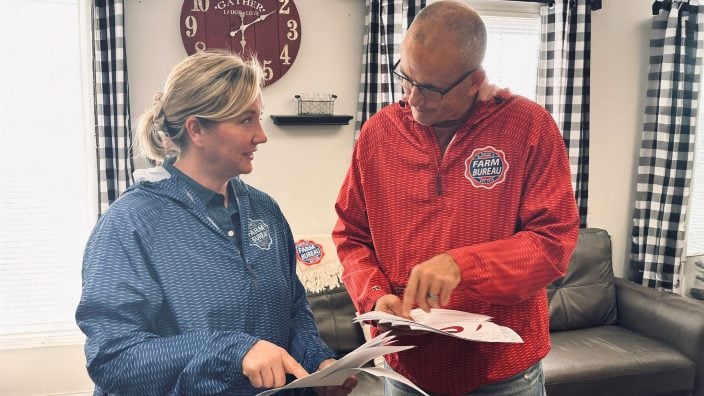Applications for Ohio Farm Bureau Health Plans now available
Members have three ways to apply: contacting a certified agent, calling 833-468-4280 or visiting ohiofarmbureauhealthplans.org.
Read MoreA bill pending in the Ohio House seeks to clear up confusion over whether landowners own the mineral rights to their property.
The confusion is over which version of the state’s Dormant Mineral Act applies to oil and natural gas activity. For generations, Ohioans made extra money by separating the mineral rights under the ground from the surface rights on the ground. Those rights weren’t worth much for decades until recently when horizontal drilling started accessing new areas of oil and gas.
Enacted in 1989, the Dormant Mineral Act determines when the mineral rights can be returned to those who own the surface rights. Under the act, mineral rights can be considered abandoned if not used by the original owner or heirs in the last 20 years. In 2016 the Ohio Supreme Court ruled the act did not automatically reunite abandoned mineral interests with the surface rights, as many believed happened under the original version of the law. This has caused confusion and frustration for landowners who did not reunite abandoned mineral rights with the surface rights through a judicial ruling prior to June 30, 2006, when the law was amended to its current form. Instead, landowners must do their due diligence in finding potential heirs of the severed mineral interests to accomplish this process.
“Ohio’s DMA has a gray area when it comes to which version of the law should be followed and how much research should be conducted before a property is deemed abandoned,” said Rep. Jack Cera, D-Bellaire. “Property can be in a family for decades when they find out that a previous owner is staking claim to the mineral rights of the property and the resulting financial gain.”
Cera is sponsor of House Bill 100, which lays the groundwork for a more efficient way for landowners to properly certify their property and oil and gas rights for the future. Ohio Farm Bureau provided testimony in support of the legislation.


Members have three ways to apply: contacting a certified agent, calling 833-468-4280 or visiting ohiofarmbureauhealthplans.org.
Read More

One of the best decisions Shannon and Heather Utter made a few years ago was looking into a Farm Bureau member benefit that has ended up saving them thousands of dollars on their energy bills.
Read More

Ryan Hiser has experienced first-hand the importance of having the opportunity to vote on issues that will affect his family operation and other farmers.
Read More

Bill Patterson, Cy Prettyman and Adele Flynn will continue to serve as officers for Ohio Farm Bureau Federation.
Read More

Delegates discussed many topics impacting agriculture including farmland preservation, local foods, and succession planning.
Read More

Twenty-six farmers govern the state’s largest farm and food organization.
Read More

The 2025 recipients are Fred Cooke (posthumous) of Richland County, Marvin Dietsch of Williams County, Steven Knollman of Hamilton County and Michele Miller (posthumous) of Ottawa County.
Read More

Nathan and Jill Parriman grow seasonal crops, including Christmas trees, pumpkins and cut flowers, providing U-cut experiences that invite customers to engage directly with agriculture.
Read More

The 2025 Distinguished Service Award recipients are Craig Adams, Mike Townsley, and Kellogg Farms, Kurt Farms and Stateler Family Farms.
Read More

Ohio Farm Bureau Treasurer Adele Flynn participated in the meeting, representing Ohio farmers.
Read More